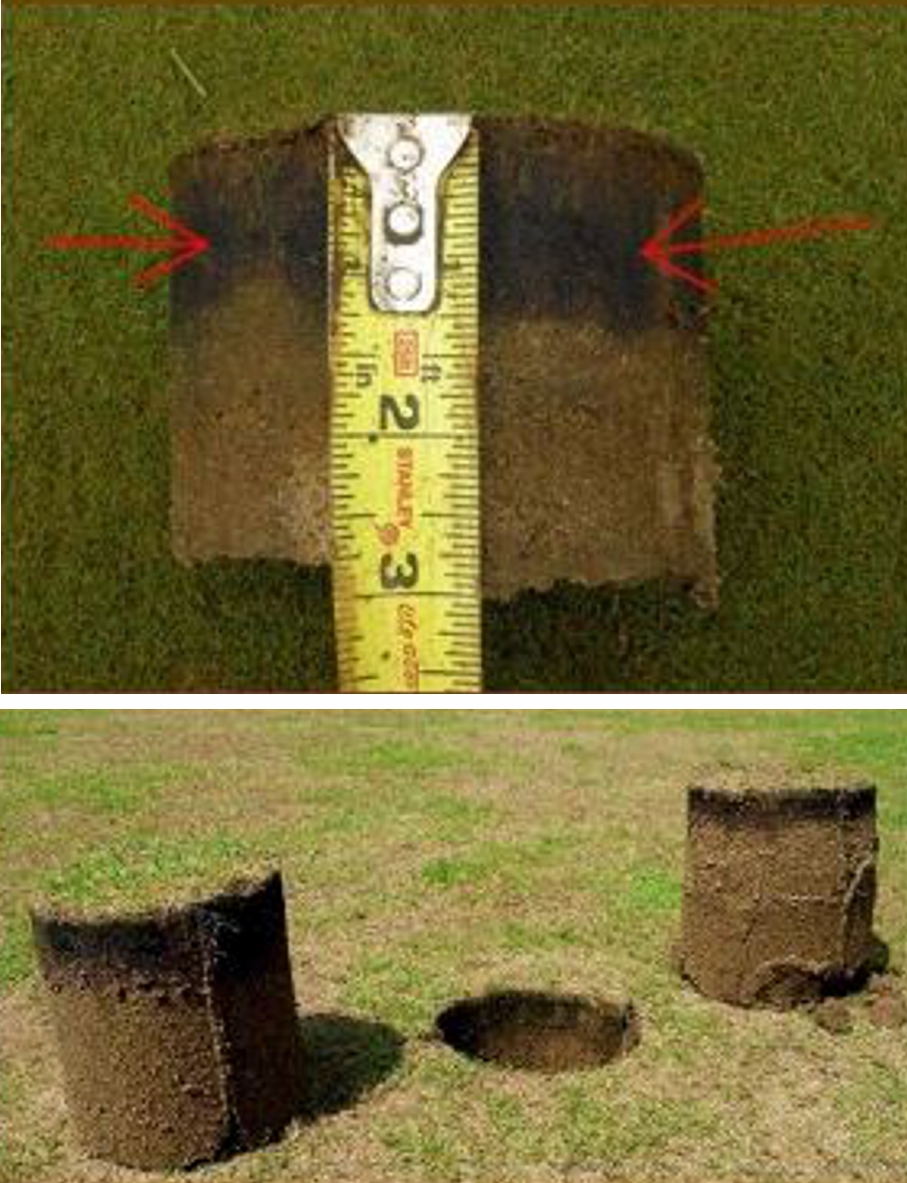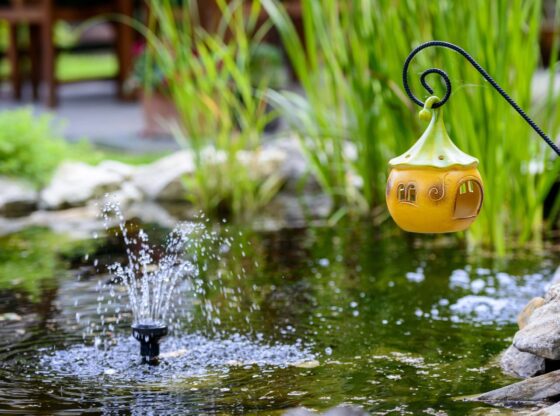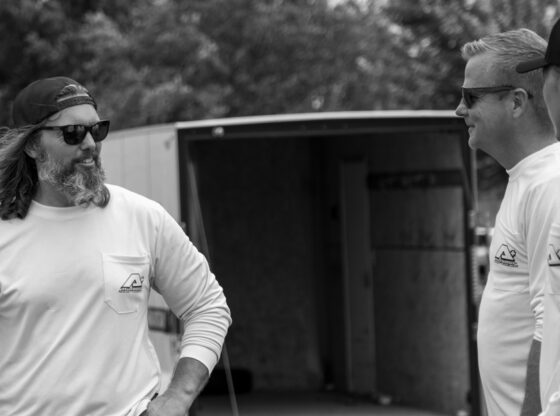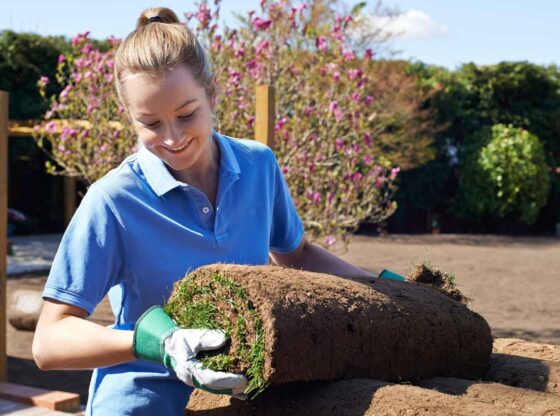A problem not often identified as a water quality issue is “Black Layer” or “Black Root Zone.” Irrigation using lake water with a high concentration of suspended matter will eventually cause a build up within the surface layer of greens and tees. Sediments can also be pulled into the irrigation system if suction lines are located too close to the lake bottom.
The sediment at the bottom of the lake will often contain heavy metals, anaerobic bacteria, and partially decomposed organic material. None of it is good for turfgrass or your soil profile.
When this sediment is applied to the turf it can create a “black layer” in the grass root zone. This layer will effectively seal the root zone and not allow oxygen, water, or nutrients to percolate down to the roots of the turfgrass, creating disease or even death of the grass.
Identifying the Problem
To recognize the problem, study soil cores. Look for a dark colored layer starting at the surface. The deeper the layer extends the longer poor lake water quality has been an issue. All lakes loose their ability to remain clean with age, so the problem gets worse with time.

A Black Layer will ruin a USGA tee or green. It will cause problems even in fairways. Rooting often becomes shallow and water percolation suffers. As the Black Layer builds up nutrient storage is hampered.
Cost of Damages
Should this happen it will be necessary to replace the greens or core out and install new USGA mix in the turf. The costs can be staggering. Coring out and installing new USGA mix costs $10,000 to $15,000 per green. The cost to rebuild and reshape a green can range from $35,000 to $45,000 per green or a possible total cost of $850,000.
Mr. Jim Moore, Director of Education for the USGA states, “This is a lot bigger problem than most people realized. It’s destroyed a lot of greens. Clubs are faced with the reconstruction of greens and tees built within the last ten years because of lousy water quality.”
Controlling Lake Aeration
Obviously the water quality issue must be addressed to stop further damage. Lake aeration is a key component. Good lake aeration will allow a healthier bacteria population to decompose the organic matter. It’s not an instant fix for a lake in poor condition. Plan for a year or more of aeration to see acceptable results.
For affected soil areas, wetting agents may help relieve the particle tensions so water can more easily percolate deeper into the soil. Soil aeration will assist the breakdown of organic matter. Over time improvements can be slowly made.













I spent a lot of time to find something similar to this